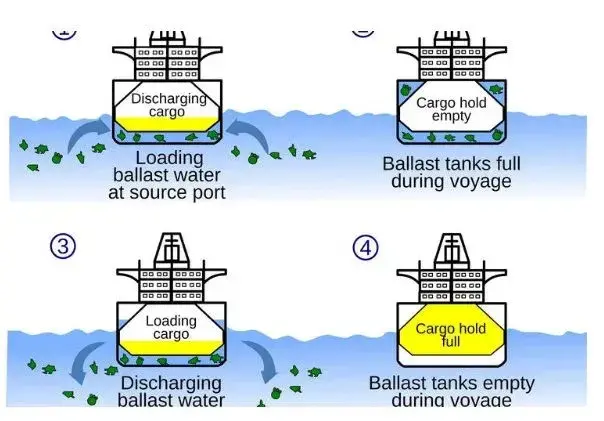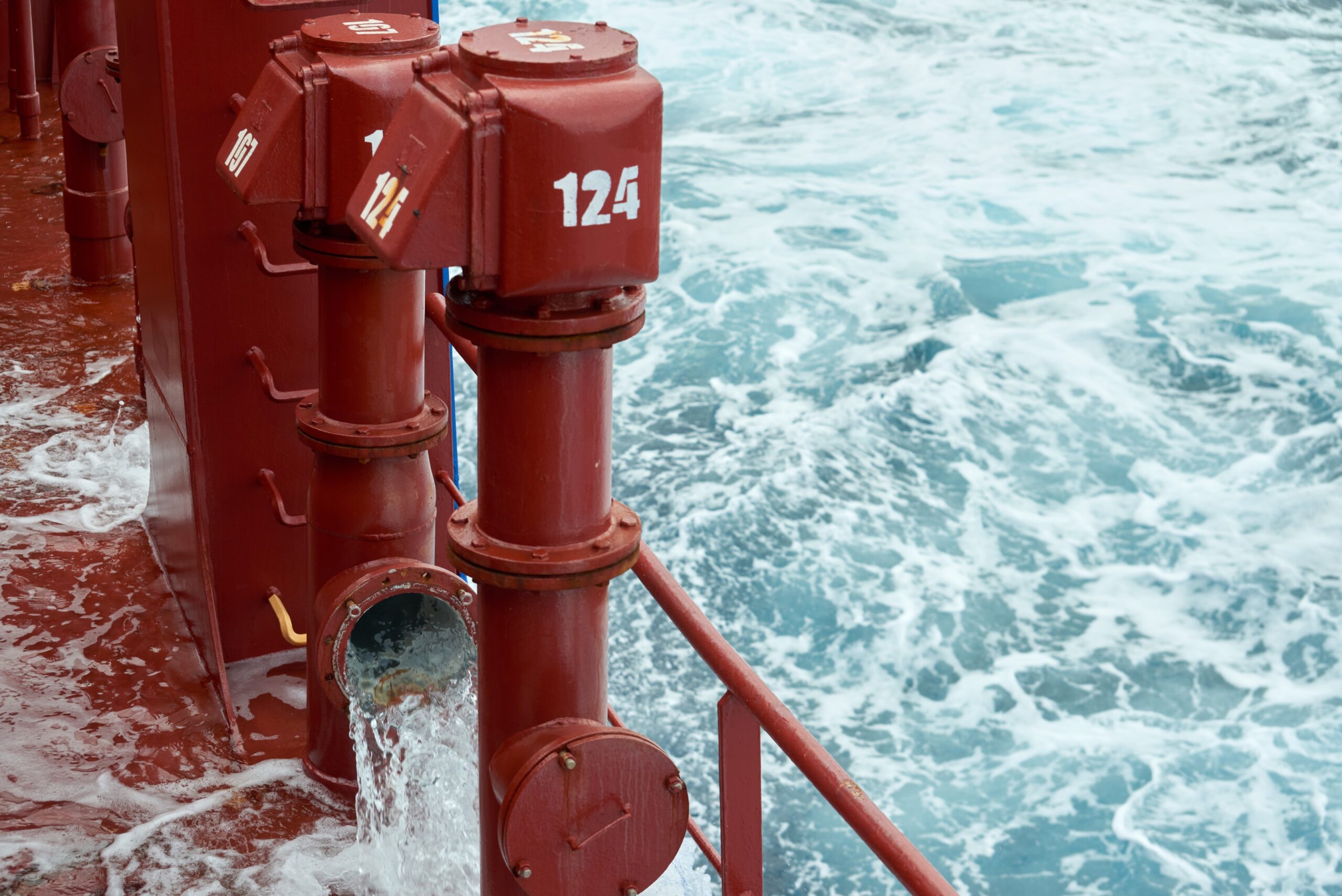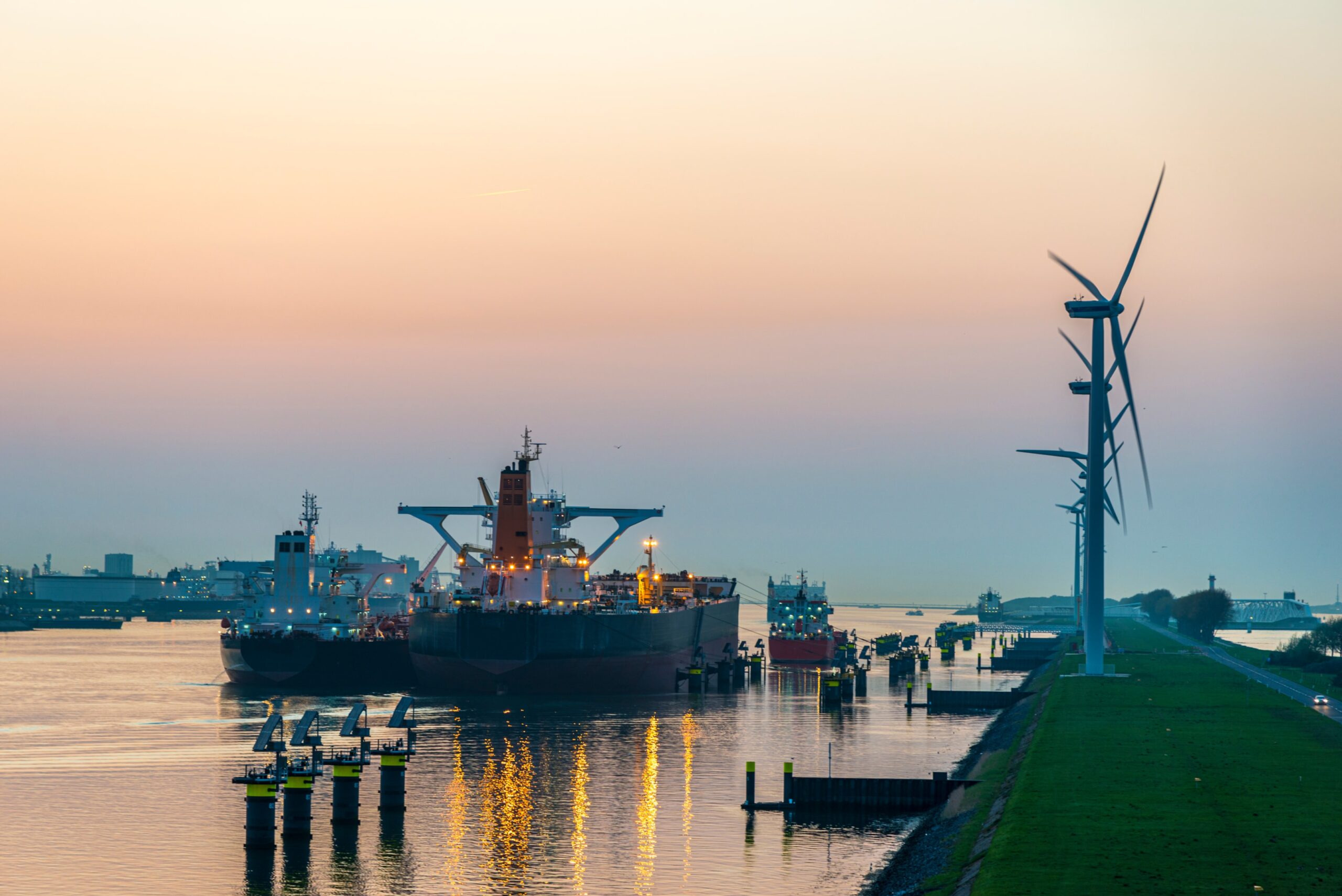Every vessel that operates across international waters, big or small, carries ballast water to maintain stability. While ballast water is important for safe and efficient maritime operations, it also poses significant environmental threats. The International Maritime Organization (IMO) has introduced regulations to control the discharge of ballast water to protect marine ecosystems from the spread of invasive species.
This blog aims to guide you through the essentials of a ballast water management plan, the importance of compliance with IMO regulations, and the role of sustainable practices in preserving marine biodiversity.
What Is Ballast Water?

Ballast water is taken in by ships to provide stability during transit, especially when vessels are not carrying cargo or when cargo weight is unevenly distributed. Ships pump ballast water into designated tanks to maintain a safe balance and to improve maneuverability, especially in rough seas. It helps to adjust the vessel’s trim and ensure the propellers remain submerged.
The practice of using ballast water exchange at sea has been around for centuries, and it’s an indispensable part of modern shipping. However, there’s a hidden downside to this practice that has sparked concern within the maritime industry.
Why Is Ballast Water Important?
Ballast water serves multiple critical functions in a ship’s operations. It helps:
1. Maintain Vessel Stability: When a ship is not fully loaded or when cargo is unevenly distributed, ballast water provides stability.
2. Ensure Structural Integrity: By adjusting the weight distribution, ballast water reduces stress on the ship’s hull.
3. Facilitate Safe Navigation: Ballast water helps keep the vessel steady during rough sea conditions and prevents excessive rolling or pitching.
Without the use of ballast water, ships would face significant risks to safety and operational efficiency. However, the way this water is managed has a far-reaching impact, particularly on the marine environment.
The Impact of Untreated Ballast Water

While ballast water is essential for ship operations, its environmental impact has been alarming. When ships take in ballast water from one geographical region and discharge it in another, they inadvertently introduce non-native species into new ecosystems. These aquatic organisms can range from bacteria and viruses to small invertebrates, eggs, and larvae.
When released into foreign waters, these invasive species can out-compete native organisms, disrupt ecosystems, and cause long-lasting damage to biodiversity. Some examples of harmful invasive species include the zebra mussel, North American comb jellyfish, and the European green crab. Once introduced, these species can multiply rapidly, leading to ecosystem imbalances, economic loss, and even threats to human health.
The problem of untreated ballast water is global, and the IMO has introduced regulations to curb this environmental hazard.
IMO Ballast Water Management Convention
The International Convention for the Control and Management of Ships’ Ballast Water and Sediments, commonly known as the Ballast Water Management (BWM) Convention, was adopted by the IMO in 2004. This landmark convention aims to prevent the spread of harmful aquatic organisms by regulating how ships manage their ballast water.
The convention officially entered into force on September 8, 2017, and sets out specific standards for ships to follow when discharging ballast water.
Key IMO Regulations for Ballast Water
The BWM Convention has established two main standards that every seafarer should be aware of:
1. Ballast Water Exchange Standard (Regulation D-1): This standard requires ships to perform ballast water exchange at sea. Ships must replace at least 95% of ballast water by volume in an approved area, generally at least 200 nautical miles from the nearest land and in waters at least 200 meters deep. This method relies on the principle that organisms from coastal waters are less likely to survive in the open ocean.
2. Ballast Water Performance Standard (Regulation D-2): This regulation specifies the number of viable organisms allowed in discharged ballast water. Ships are required to use a Ballast Water Management System (BWMS) that treats the water before discharge, ensuring that harmful aquatic organisms are not released into the sea.
These standards apply to all ships of 400 gross tonnage and above that are designed to carry ballast water.
The International Ballast Water Management Certificate (IBWMC)
To comply with the BWM Convention, all applicable ships must carry an International Ballast Water Management Certificate (IBWMC) on board. This certificate is issued after an initial survey confirms that the ship meets the necessary requirements. Along with the certificate, the ship must also maintain:
1. An Approved Ballast Water Management Plan (BWMP): This document outlines how the ship will manage its ballast water to meet IMO standards.
2. A Ballast Water Record Book (BWRB): This log records all ballast water activities, including intake, treatment, and discharge.
These documents ensure transparency and accountability in how ships manage ballast water.
What Happens If You Don’t Comply?
Failure to comply with ballast water management regulations can lead to serious consequences. Ships that don’t meet the required standards may face fines, delays, or even detention in port. Additionally, non-compliance can result in severe environmental damage, as untreated ballast water may introduce harmful species into fragile ecosystems.
Sustainable Ballast Water Practices

Sustainability has become a growing concern in the maritime industry. By managing ballast water responsibly, seafarers and ship operators can contribute to marine conservation efforts and reduce the harmful effects of invasive species.
One sustainable practice is the use of Ballast Water Management Systems (BWMS). These systems treat ballast water using various methods, such as filtration, ultraviolet light, and chemical disinfection, ensuring that harmful organisms are removed or rendered harmless before the water is discharged. Ships fitted with BWMS are better equipped to comply with the Ballast Water Performance Standard (D-2).
Moreover, the adoption of green technologies and environmentally friendly practices, such as reducing the amount of ballast water intake in high-risk areas, can help minimise environmental damage. Some innovative solutions include the development of vessels with better hydrodynamics, which reduces the need for ballast water altogether.
Challenges in Ballast Water Management
Despite the regulations in place, implementing effective ballast water management presents several challenges:
1. Cost of Installation: Installing a BWMS can be costly, and some older vessels may require significant retrofitting to meet the standards. The financial burden of compliance is a concern for many shipowners.
2. Complexity of Operations: Managing ballast water in compliance with regulations requires careful planning and technical know-how. Crew members must be properly trained to operate BWMS and ensure that ballast water is treated correctly.
3. Operational Issues: Ships operating in waters with high turbidity or challenging conditions may encounter difficulties in performing ballast water exchange. In such cases, having a BWMS is crucial to avoid environmental risks.
It’s important for seafarers to be aware of these regional regulations and ensure their vessels meet both international and national requirements.
The Future of Ballast Water Management
The implementation of the BWM Convention marks a significant step toward sustainable shipping practices, but the work doesn’t stop here. As the maritime industry continues to evolve, so too will the technologies and regulations surrounding ballast water management. Researchers are constantly exploring new ways to enhance the treatment of ballast water, improve BWMS technology, and reduce the environmental impact of maritime operations.
Seafarers and ship operators will need to stay informed about updates to ballast water management regulations and invest in continuous training to ensure compliance with evolving standards.
Ballast water management is a critical issue for seafarers and the shipping industry as a whole. The IMO’s Ballast Water Management Convention provides a comprehensive framework to minimise the ecological risks posed by ballast water discharge, but compliance requires careful planning, technical expertise, and a commitment to sustainability.
By following the BWM Convention’s regulations, using approved BWMS, and staying informed about regional rules, seafarers can help protect marine ecosystems and contribute to the sustainable future of global shipping. As the industry moves toward greener practices, responsible ballast water management will remain a key aspect of environmental stewardship at sea.
FAQs on Ballast Water Management
1. What is ballast water?
Ballast water is seawater taken into a ship’s tanks to maintain stability, especially when the ship isn’t fully loaded or when cargo weight is unevenly distributed. It helps to balance the vessel, maintain structural integrity, and improve maneuverability, especially in rough seas.
2. Why is ballast water management important?
Ballast water management is essential to prevent the spread of harmful aquatic species. When ships discharge ballast water in a new location, they may introduce non-native organisms into the local ecosystem, which can cause ecological disruption, threaten marine biodiversity, and even harm local economies and human health.
3. What is the IMO Ballast Water Management (BWM) Convention?
The IMO Ballast Water Management Convention was adopted in 2004 and came into force on September 8, 2017. It sets international standards for how ships manage their ballast water to prevent the spread of invasive species. All ships are required to comply with the regulations laid out in the convention.
4. What are the key IMO regulations for ballast water management?
The BWM Convention outlines two main standards:
– Ballast Water Exchange Standard (Regulation D-1): Ships must perform ballast water exchange at sea, replacing at least 95% of the ballast water. This exchange should be done at least 200 nautical miles from land and in waters at least 200 meters deep.
– Ballast Water Performance Standard (Regulation D-2): Ships must use a Ballast Water Management System (BWMS) to treat ballast water before discharge. This ensures that harmful organisms are removed or neutralised.
5. What is a Ballast Water Management Plan (BWMP)?
A BWMP is a plan that outlines how a ship will manage its ballast water to meet IMO standards. It includes detailed procedures for treating, exchanging, and discharging ballast water in compliance with international regulations. All ships subject to the BWM Convention must have an approved BWMP on board.

Leave a Reply